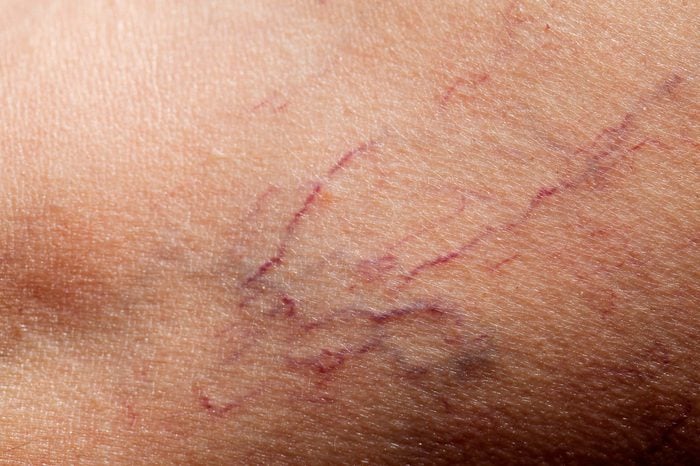
What are broken capillaries?
Broken capillaries or spider veins, officially called telangiectasia, are tiny thread-like veins that we see on the surface of the skin. “When the walls of these blood vessels widen and narrow suddenly, they may become permanently damaged—and dilated, making them more visible,” says Mark H. Schwartz, MD, FACS, a New York City plastic surgeon and clinical assistant professor of plastic surgery at Weill Cornell Medical College. When the vessels don’t heal properly, they can end up looking like tiny blood spots or a network of fine tree branches.

What causes them?
Capillaries burst for a variety of reasons—most commonly, genetics, sun damage, rosacea, trauma to the skin, and aging. “That long list just proves that we don’t really know why they happen in any one case,” Dr. Schwartz says. If your parents have a ruddy complexion (caused by more vessels closer to the skin), it’s probable that you will too. Years of sun exposure along with that can cause capillary damage: “As more ultraviolet rays pound the dermis, elastin fiber weakens and blood vessels migrate closer to the skin, becoming more superficial, which in turn makes them more visible,” explains Bobby Buka, MD, a dermatologist and assistant professor at Mount Sinai School of Medicine in New York City. People with rosacea, a condition that causes skin to appear reddish and flushed, are more likely to experience spider veins, according to Dr. Schwartz. The body reads rosacea as damage and triggers inflammation to try to heal it, but inflammation itself becomes problematic. And as we age, our skin is less able to bounce back from these minor sources of damage. “Older individuals are more likely to have broken blood vessels since the skin is thinner and weaker, and the collagen is not replaced as rapidly as in younger skin,” notes Dr. Schwartz. Learn more about the skin care tips dermatologists follow.
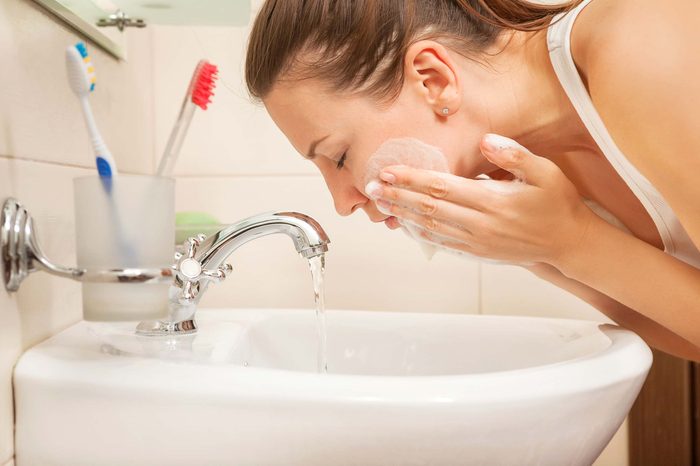
You can help prevent broken blood vessels
You’re stuck with your genes, but there are lifestyle habits that make capillaries more vulnerable to breakage. “The best way to avoid broken capillaries is to understand the causes that we can control,” Dr. Schwartz says. Repeated skin trauma, from aggressive scrubbing, exfoliating, and pimple-popping, plus environmental factors, such as sunburn, windburn, and extreme temperatures, are common contributors to broken capillaries. Find out what really happens when you get a sunburn.

Protect your skin from environmental damage
Inflammation can exacerbate rosacea, increasing the likelihood of having visible capillaries and ruddiness or that overall reddish complexion. Experts agree that the best way to keep rosacea from flaring up is by using moisturizer and sunscreen daily. “While neither will repair existing spider veins, the combination will help to prevent future damage to blood vessels from environmental hazards such as sunburns and irritation,” says Dr. Schwartz. When choosing a moisturizer, follow dermatologists’ rules for proper moisturizing. And make sure to be especially diligent when you’re outside in extreme temperatures, when you’ll want to reach for a heavy duty skin protectant. When choosing sunscreen, always opt for broad spectrum SPF 30 or higher. Here are the sunscreens dermatologists use on themselves.

Avoid vasodilators
Heat, caffeine, alcohol, and spicy foods can cause vessels to fill with blood, which makes capillaries look more pronounced, according to Dr. Buka. While these vasodilators, or things that dilate blood vessels, aren’t the cause of broken capillaries, they can accentuate any underlying redness. Do you know the seven foods (and drinks) that can trigger a flare-up of rosacea?
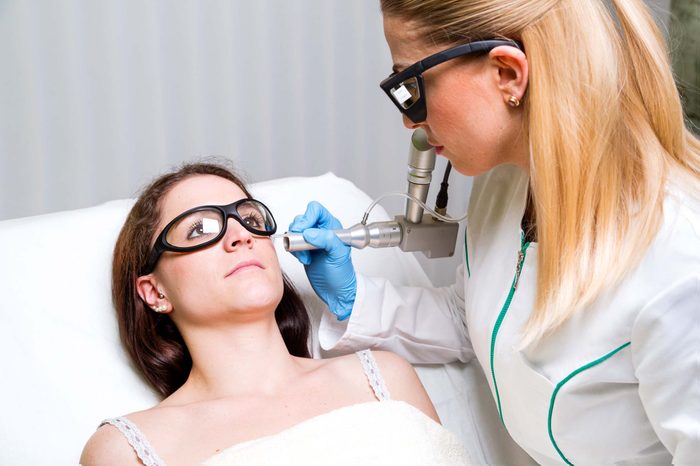
VBeam laser treatment
Experts agree that the VBeam laser is the gold standard for treating visible capillaries. As Dr. Buka explains, every color has an absorption spectrum, a frequency of light absorbed by that particular color. The VBeam laser emits a frequency of 595 nanometers of ultraviolet light—and that frequency is absorbed only by the color red. “That means that tan or brown parts don’t notice the frequency of light,” Dr. Buka adds. The light energy is then converted into heat in the skin. A blood vessel heated super fast will explode, whereas blood cells heated more slowly will shrivel and disappear over time. Higher heat will likely leave a bruise for five to seven days but will likely require only one treatment. Lower heat won’t leave a bruise but may require follow-up treatments. Dr. Buka recommends talking to your doctor to determine the proper course of treatment for you.
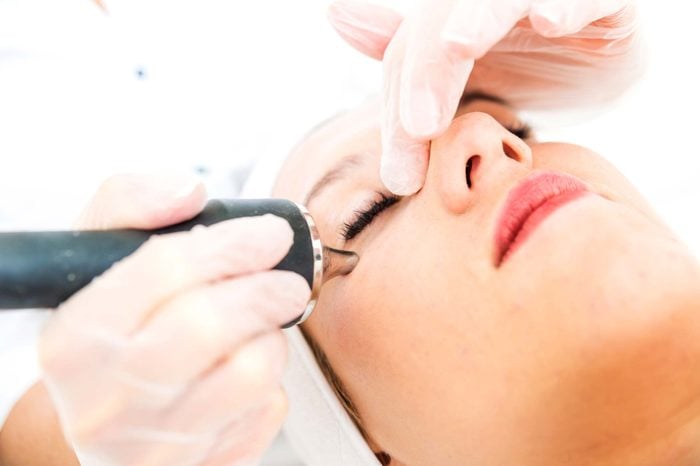
BBL laser treatment
Another option for broken capillaries, and the go-to choice for Dr. Schwartz, is Broad Band Light Therapy (BBL). Like VBeam, it uses laser light, but unlike Vbeam, it can emit multiple wavelengths—the 560 nanometer wavelength is the one most commonly used for vascular lesions. This presents pros and cons. “The BBL laser has the advantage of being able to treat other skin lesions, including brown spots, acne, and overall texture and tone if used repeatedly,” says Dr. Schwartz. “But the frequency of light isn’t as cleanly picked up by the color red as the VBeam, so some brown pigment can get absorbed if you turn it up too high. For this reason, patients typically require a few sessions,” explains Dr. Buka. Read up on the benefits of laser treatments.
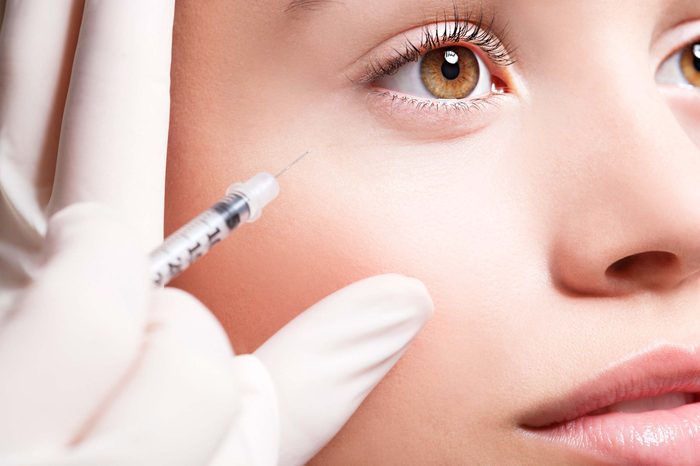
Steer clear of electrodessication
For many years, electrodessication, also known as electrocautery—in which a fine needle tip penetrates the skin to cauterize broken blood vessels—was the most common treatment for broken capillaries. Since then, lasers have proven to be a safer and more effective option. “This old-school method can leave scars and damage the surrounding tissue,” says Dr. Buka.
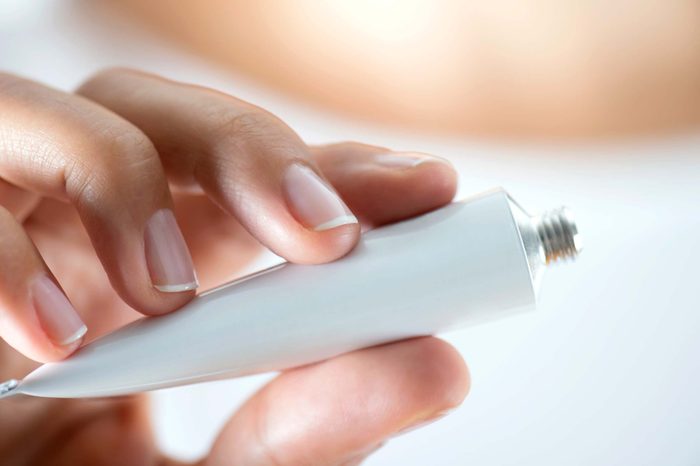
Try a topical treatment
As far as topicals go, vitamin A creams (tretinoin) may be helpful with broken capillaries, since they can boost collagen quantity and quality in the skin. This in turn can minimize the appearance of broken capillaries, explains Dr. Schwartz. If you’re struggling with broken capillaries, you might want to consider adding a skin-strengthening serum to your daily routine. Two options from Dr. Schwartz: Odacite Ap+P Serum Concentrate harnesses the power of apricot and palmarosa to fight inflammation, improve microcirculation, and strengthen fragile capillary walls. Tammy Fender Capillary Strengthening Blend is formulated with chamomile, neroli, and rose and carrot seed oils to heal and reinforce weakened capillaries.
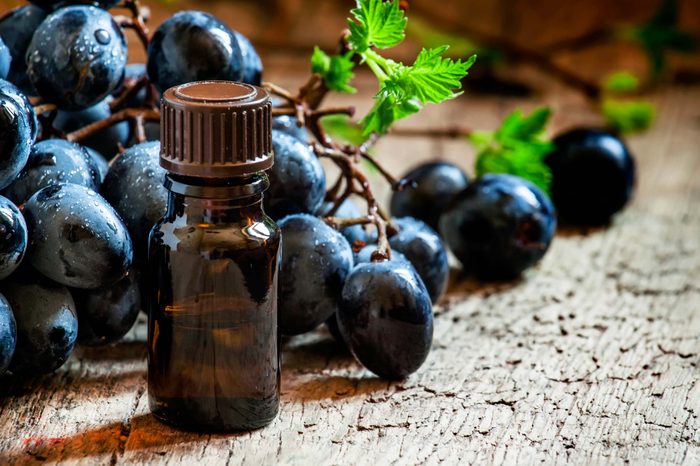
Consider a natural remedy
While you won’t see the same degree of results as with a laser, natural solutions can be effective at reducing the appearance of dilated capillaries and keeping new ones from popping up. Vitamin E, grape seed extract, arnica, and horse chestnut seed extract are among the most popular formulations, according to Doctors’ Favorite Natural Remedies, written by the Reader’s Digest editors.
